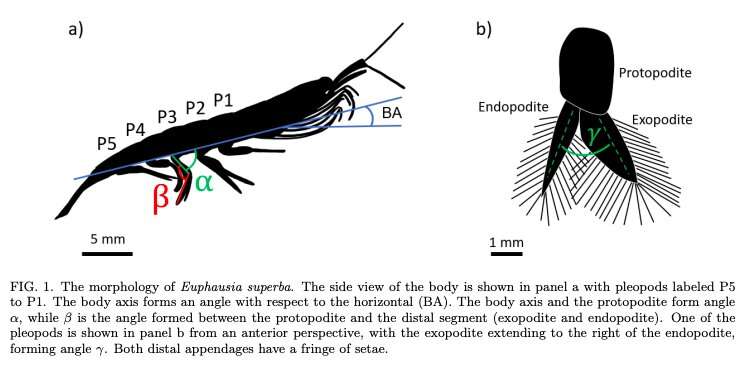March 7, 2022 feature
RoboKrill: A crustacean-inspired swimming robot for marine exploration

To better understand seas and oceans on Earth, their processes, and the living organisms inhabiting them, scientists must be able to explore them and collect data underwater. In recent years, roboticists have thus been trying to develop increasingly advanced systems that could aid the exploration and monitoring of underwater environments.
Researchers at Brown University and Universidad Nacional Autonoma de Mexico have recently created RoboKrill, a new robot inspired by a shrimp-like species of crustaceans, called krill (Euphausia superba). This robot, introduced in a paper pre-published on arXiv, artificially replicates the swimming kinematics of krill to seamlessly move around in underwater environments.
"Before this project, I was conducting different studies aimed at understanding the role of plankton aggregations in the ocean," Monica M. Wilhelmus, one of the researchers who carried out the study, told TechXplore. "For this purpose, I carried out an experiment where I controlled the behavior of organisms using light signals. After that, I thought a good idea would be to, instead of externally controlling the behavior of the organisms, to use a robotic system that has the same signature, the dynamic signature, as swimming live creatures."
Initially, Wilhelmus only planned to briefly explore the possibility of developing a robotic system that replicated the swimming kinematics of krill. However, she soon realized that her project had a lot of potential, as it addressed an existing gap in the literature.
"Currently, there are either swimmers that are engineering to swim really slowly or very quickly, but there is nothing in between," Wilhelmus explained. "I thus realized the vast opportunities that developing such an 'intermediate' system could open, particularly for completing tasks that are difficult to tackle with big systems. The product we created is the baseline to reach this end."
When developing their robot's design, Wilhelmus and her colleagues tested different parameters independently in their lab. Subsequently, they optimized these parameters to achieve their desired speed and kinematics.
In the future, RoboKrill could be used by biologists and environmental scientists to remotely explore marine environments and collect valuable data underwater. In the meantime, the team plans to continue improving the robot, while also evaluating its performance in real-world settings.
"We will now be studying the effects of semi-kinematic morphological features and the dynamic interactions in the generation of thrust and optimizing important parameters to develop a simplified system that we can then miniaturize or scale down," Wilhelmus said. "Our ultimate goal is to then engineer a small system that we can use, for example, to sense or intervene in different compact environments."
Ultimately, Wilhelmus and her colleagues hope to develop a swarm of artificial swimmers that can be deployed in real marine environments to gather specific research data. After these swimmers are deployed in real settings, the team will also be able to test different parameters further and improve on their design, reducing its size within the centimeter-scale and improving its swimming capabilities further.
More information: Sara Oliveira Santos et al, RoboKrill: a metachronal drag-based swimmer robot. arXiv:2202.01037v1 [cs.RO], arxiv.org/abs/2202.01037
© 2022 Science X Network



















